A Very Dark Wheel
We awoke at the Amari Watergate bright and early. There was much to do this day, and we were eager to get under way.
After our complimentary cups of coffee, we set out towards the Cambodian National Postal Authority. Â En route, we stopped at a roadside stall with umbrellas and deck chairs to attempt to enjoy breakfast.

The coffee was an alkaline slurry of sugar and brown milk, and our food consisted of instant noodles, and old rice. Well, you can’t win them all…
Once we got inside, we began walking from counter to counter allowing them to weigh the package of Cambodian military surplus that we had purchased the day before for project K9.
The pricing and readout of the scales at the post office seemed to be tied to no standardized system. When none of the front windows would offer us a price we were interested in, we began to dig deeper. Behind the post office, we found a group of postal workers wiling away their day playing Pétanque (likely a hold-over from the French). From there we wandered in a back door, where we met a fellow who was lounging and snoozing on a wooden chair. He kindly showed us around to the far end of the post office, where we found yet another bank of counters.
The readout from the scale at these counters was much more favorable. The woman at the front desk was also overwhelmingly friendly and grinned and giggled while she packed up our items in a Vietnamese instant noodles box, taping it redundantly with brown tape. We hung around a while after paying, in case she needed us to make a customs declaration, but she apparently didn’t.
Back on the cycles, we headed in search of coffee and food, as the morning’s sustenance did not suffice.  Coming across a Chinese noodle joint, we feasted.

We took off from there, heading toward our third waypoint: the Tuol Sleng Genocide Museum. This is the notorious Security Prison 21 (S-21) that was the sight of some of the most gruesome treatment of humans to occur during the reign of the Khmer Rouge. Perhaps second only to the terrible mass murders that took place at our next waypoint, a place colloquially called “the killing fields.”
But I’m getting ahead of myself.
We rolled into S-21 in high spirits, and despite some very effective joking around with the parking guards, promptly struck out in all attempts to bargain down the price of parking the bicycles. Our argument was that the price should be somewhat in line with the relative space required to park the cycles as supposed to a car. The guard was jovial, but would not budge. So we decided to consider it a donation to the museum, and proceeded to buy tickets and make our way inside.
You see, dear reader, Scott and I knew very little about the history of Cambodia going into this experience. We knew even less about the story of the Khmer Rouge, which I had only to-date encountered in the form of a vermouth-heavy cocktail by the same name often mixed by a good friend of mine. But I am once again getting ahead of myself… let it suffice to say a poorly timed expiration of the batteries in the Wikireader had sent us into this experience somewhat blind. And my goodness were we in for a shock.
There were three large exhibit buildings that made up the S-21 Genocide Museum. We are far from sure if this was how the museum was designed to be explored, but we started on the left side and as we walked began to learn, in bits and pieces, the story of the facility, and in doing so, the story of the Khmer Rouge.
S-21 was at one point a high school. Four months after the Khmer Rouge came to power in August 1975, the complex was converted into a prison and interrogation center. The Khmer Rouge renamed the complex “Security Prison 21” (S-21) and construction began to adapt the prison to the inmates: the buildings were enclosed in electrified barbed wire, the classrooms converted into tiny prison and torture chambers, and all windows were covered with iron bars and barbed wire to prevent escapes and suicides.
When the city of Phnom Penh fell to the Vietnamese in 1979 (note dear reader how short the rein of the Khmer Rouge was), the liberating troops followed the stench of corpses to the gates of S-21. Inside they found a terrible scene of carnage, with the bodies of tortured inmates chained atop iron beds, the staff of the facility having recently fled.
Due to our choice of a left turn, our first experience in S-21 was of these metal beds; each is preserved in a state of gruesome authenticity.

As we entered the first building, we wandered from room to room. Each room was a medium- to large-sized classroom. Inside of each was a rusted iron bed, usually with a couple of items placed on it as if tossed aside in a frantic departure. Among these items were the metal spades of shovels (used as weapons and torture devices), ammunition cases, shackles, and lengths of chain.
The rooms were deeply haunting, conjuring images from movies like Saw and Hostel. Except, when I saw these movies, I approached such extremes of brutality as a piece of intellectualized hyper-violence, a kind of inhumanity that is relegated to the most terrifying corners of our imagination, or at least relegated to the distant past, and as such, sterilized to a point that one can cloak oneself in sterile objectivity and spit comments from the back row. Now it was here, staring me in the face.
The weight of this place was immense. It felt like weeks had passed, not years, since the liberation of S-21. The museum was set up more like a crime scene than a conventional western museum, with items thrown on the ground as though they had been discarded while fleeing. Exhibits were set off-center and akimbo, as if they too were evidence that the visitor was stumbling upon, rather than calculated pieces of communication.
Explanatory placards were few and far between, leaving us to draw our own haunting conclusions from a number of yellowed and faded prints that hung in each room. The prints were from the original negatives that were taken during the liberation of S-21, and while they were often blurry and under-exposed, we could easily see that each one was of a tortured and starved human being, sprawled dead on the very same iron bed that lay before us.
While I am not one to believe in the supernatural, there was a certain weight to the air, a certain difficulty in breathing, a certain inability to feel relaxed or completely logical, which one might have easily attributed to ghosts.
We exited this first building in which they had found the tortured bodies chained to beds, and made our way into the next. We stopped for a moment to learn more about a strange structure that stood between the two buildings. It had at one point been part of the school’s physical education equipment. It had held three ropes, which were used to test students’ ability to climb. The Khmer Rouge re-purposed the structure into a gallows and torture device. A large placard explained how prisoners would be tortured, first being hanged by the arms until losing consciousness, then being woken by having their heads dunked into a large clay barrel of human sewage and then hanged again until losing consciousness, in a cycle of pain and terror.
Also in the courtyard was a sign depicting the rules of interrogation.
This place was seriously heavy, and Scott and I were still left somewhat confused as the what exactly the Khmer Rouge was, and why they would resort to such brutal and inhuman behavior.
We were glad to find that the next building contained a few more answers. Much like the Nazis, the administration of S-21 had taken care to photograph and document each prisoner, and though each prisoner’s dossier was later separated from his or her photo, most of the negatives remained intact.

The bottom floor of this next building was filled to the brim with large billboards filled with images of emaciated and terrified Cambodians.

Also featured in this building was the horrible chair that a prisoner at S-21 had been forced to sit in while posing for these mug shots. The chair was wooden, strangely proportioned, as though not quite built for humans, and bolted onto a large metal contraption, sporting a pointy apparatus used to steady the head. I cannot imagine a more terrifying chair.
From there, we made our way upstairs to the second floor. There we finally got some more information on the Khmer Rouge and what it was we were witnessing. Since it will continue to be relevant for the rest of the post, I might as well start with a brief rundown of the Khmer Rouge and what exactly happened in Cambodia.

The Khmer Rouge (I’d let you know how it looks in Khmer, but in an unusual display of poor form on the part of Apple Computer, the Khmer language is not supported on Mac OS X) was another name for the Communist Party of Kampuchea (an alternate name/spelling for Cambodia). It of course means “Red Khmer” in French, the colonial language of Cambodia. Khmer people are the major ethnic group in Cambodia. Prior to their 1975 victory, the Khmer Rouge were a guerrilla force, which after taking control of Phnom Penh in 1975, became officially The Revolutionary Army of Kampuchea (RAK – scary acronym right?). The Communist Party of Kampuchea itself was a secret leadership of the Khmer Rouge. It consisted of a few extremely powerful insiders. To the populace, it called itself the Angkar, which means “the organization.” It only officially announced its existence in 1977, almost two years after it came to power.
The Khmer Rouge seized power in Cambodia and held it from 1975 to 1979. The Khmer Rouge were led by a fellow who called himself many things, but Pol Pot is probably what people are most familiar with. Pol Pot was originally a rich Cambodian kid who went off to study politics in France. There he became involved with French communist groups; he came back to Cambodia with a thirst for power and a hypocritically fierce animosity for the rich and educated. He became very active in the Cambodian Communist Movement and eventually, with the help of the Vietnamese, Pol Pot and his cronies were able to develop a powerful and violent insurgency.
Most historians also cite the ruthless bombing of Cambodia by the U.S. during the U.S.-Vietnam war as another important factor that lead to increased support for the Khmer Rouge, although whether the U.S. bombing was a deciding factor in the rise of Pol Pot is heavily debated. I invite discussion of this theory in the comments, however.
From there they renamed the country Democratic Kampuchea, with a flag that featured a kind of mod interpretation of Angkor Wat.
Pol Pot began a fierce campaign of social engineering focused around his contempt for urban intellectuals, wealthy folk, and religion, paired with the idea that all problems in Cambodia could be solved with increased rice production. You see, dear reader, Pol Pot thought that if he could just evacuate everyone from the cities and send them to work in the countryside, Cambodia would easily be able to double or triple its rice production in just a few years. This, of course, did not work, proving effective mainly in ushering in years of widespread famine in Cambodia.
Not long after taking power, Pol Pot began to fall out of agreement with the Vietnamese, mostly over where the border between those two countries should be, and the growing influx of Cambodian refugees making their way to Vietnam to escape the Khmer Rouge.
Another part of this re-arranging of society was the removal of people who did not fit in with the plan. People who fell into this category were those who were not purely Cambodian by blood (especially Vietnamese-esque individuals), people who were educated (this category extended all the way to anyone who could read), people who were seen as threats to the power of the current regime (this category included mostly a random smattering of the unlucky) . People who wore glasses were even encouraged to thrown them away so as not to look intellectual or literate. Cambodia became the most isolated and backward country in southeast Asia, seemingly overnight. It also became a very scary place to live.
The cities were emptied, as long-time city dwellers were sent to work in the fields. At the height of the Khmer Rouge, Phnom Penh became a ghost town, occupied by less than a tenth of its previous population.
Pol Pot was obsessed with Cambodian self-sufficiency, so in the case of goods where self sufficiency was nearly impossible due to lack of intellectuals, supply, or infrastructure, he would simply pronounce the good to be unimportant or even evil. This madness was applied even to the national supply of medicine. No surprise – this, led to the deaths of thousands from treatable diseases (such as malaria).
Purging of undesirable elements of the population ramped up, along with purges of Pol Pot’s own ranks, mostly driven by increasing paranoia and distrust of his advisers. In the end somewhere between a fifth and a third of the population of Cambodia was killed, either in prisons, during forced labor, or in death camps.
War broke out between a re-united communist Vietnam (still fresh from soundly whopping the U.S. during its civil war). And while the Vietnamese were able to liberate Phnom Penh, Khmer Rouge forces still held some areas in the north until the late 90s. Let me say that again: the late 90s!
Unbelievable.
Back in 2010, Scott and I wandered through the museum of atrocities, taking in countless more torture devices and finally wandering over to the final large school building. At the exit of this building was a large picture of a fellow they called “Duch.” He was one of the masterminds behind the genocide, and also one of the few to have confessed to involvement. As you see below, many of the visitors were none to pleased to see him.

This part had been sectioned off into individual cells using wood, brick, and concrete. It proved to be one of the most haunting locations yet. One of the most striking elements of our experience in S-21 was that it seemed not to have been cleaned since the brutal events that make it so significant. American museums are clean, sterile places. Here, the floors were covered with ambiguous dark stains, the cells were filthy, and things like hinges on doors were falling apart. Nothing was behind a barrier, it was simply set up as a space to explore.
Feeling thirsty and a bit frazzled, we made our way back out to the cycles. We paid our parking fee and left the compound. As we wheeled farther from the place, I began to feel a kind of strange relief. As we rode back into the sun, and stopped to haggle for water with a particularly friendly woman, I realized that while in the museum, part of me had begun to give up on my generally optimistic view of humanity. Seeing the evidence, and being so immersed in a place where humanity had demonstrated such ugly behavior, had frayed my senses. And now, as we wheeled our way back through the present, through a Cambodia that was on the rebound rather than in the depths of a terrible genocidal regime, I felt good. I felt happy and grateful to be where I was. Perhaps this strange phenomenon was one of the reasons that people go to places like S-21…
Our exploration of the Cambodian genocide was far from over. We pedaled hard right through the heart of Phnom Penh and soon made our way out into the countryside. We pedaled on, keeping our eyes peeled for what we assumed would be a pretty large and blatantly marked establishment. The more official name for the place is the Choeunk Ek Genocidal Center. And though there is a pretty big sign, the proliferation of cows in front of it may have distracted us. Regardless, we rode right by and some four or five kilometers farther before we realized our error. A quick consultation with a roadside vendor had us back on track and once again loaded down with water, which we continued to drink at a frightening pace. It was still stifling Cambodian humidity, after all.
We finally spotted the sign and made our way onto a much smaller and quite obviously brand new road. We parked our bikes near the entrance and made our way inside.
The first thing that anyone who visits the Killing Fields will notice is a giant glass and stone tower in the center of the compound. This tower is perhaps better called a stupa and is filled with skulls. And when I say filled, I mean jam-packed with human skulls. All these skulls had been dug out of the ground in the surrounding square kilometer or so. We decided to save the stupa of skulls for last, and first tour the facility.
This is where the Khmer Rouge would bring people to kill them. It is not large, nor is it mechanized like the death camps of Nazi Germany. People were killed here by hand, using hammers, axe handles, spades or even sharp pieces of bamboo. When the deed was done, whether dead or not, the poor soul was thrown into a giant pit and covered with DDT or lime in order to control the smell and the bugs, then covered over with dirt.
If you were a citizen of Cambodia during the reign of the Khmer Rouge and you did something to bring attention to yourself, a warning from Angkar would be delivered to you. People receiving more than two warnings were sent for “re-education,” which meant near-certain death. Re-education was where those unfortunate enough to find themselves were “encouraged” to confess to the Angkar their “pre-revolutionary lifestyles and crimes.” Such crimes were usually some kind of free-market activity, contact with an outsider, or generally suspicious behavior. Those headed to re-education camps were typically told that the Angkar would forgive them and “wipe the slate clean.” In reality they were merely taken to a place like S-21 or Choeung Ek for torture and/or execution.
The soldiers who carried out the executions were mostly young men or women from peasant families, some of them startlingly young. Â On the ground, bones were exposed on the surface after rains slowly washed away the earth, as many of the bodies in the shallow graves were so close to the surface.
Victims’ clothing fragments can still be found, many of which are placed below a central glass box displaying skeletal remains.
We strolled around the facility, taking our time, and paying our respects at the many mass graves therein, visiting the tree where children’s heads were bashed in, and finally visiting the skull-filled stupa.
What was strange about Choeung Ek, compared to S-21, was that I did not feel that same inescapable weight. Though I must once again refrain from talk of ghosts, I will say that it was not a haunting place the way that S-21 was. Perhaps it’s because it was outdoors, cleansed somehow by the warm breeze, or by the natural cycles of plant growth and decomposition. Perhaps also because it had been excavated, developed and packaged more conventionally. Whatever it was, as we exited the facility, I found myself feeling a solid sense of accomplishment, that unnerved feeling was being replaced with kind of steady recognition. I dare say that it was the feeling of coming to grips, in a way, with one of the more disgusting parts of humanity.
Outside Choeung Ek there was a Cambodian amputee in military clothing. He was propped up on crutches, and removed his hat as I approached, motioning to me that he was hungry and and wanted money with which to buy food. I don’t generally give money to panhandlers, but later on when Scott and I sat down to eat a couple of coconuts, I walked over to him and offered him half of mine. He smiled and refused.
We climbed back on the cycles and wheeled home. Sure, we got a few other things done, but now, as I reflect on this dark wheel, they seem all too insignificant to even waste your time with, dear reader.
![]()


























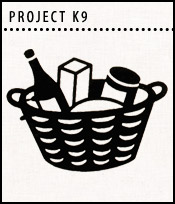
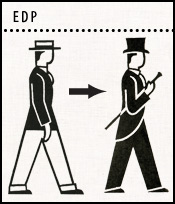
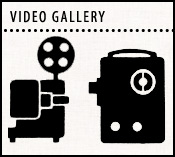
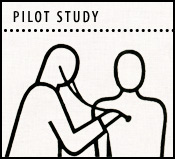
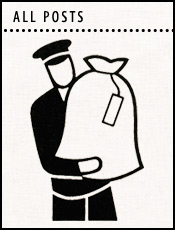
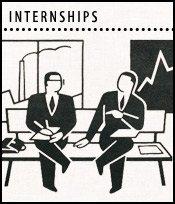




Comments
Even at the time, the remarkable lack of concern and press in the U.S. accorded the actions of Pol Pot and the Khmer Rouge was peculiar if not shameful. We all know about the holocaust, but that affected even wealthy people in a first-world country. It was an important thing for you guys to see, because it will re-play again and again (Rwanda, Darfur…).
I have skimmed most of your posts. I could not simply skim this one. Why is it we do not learn to point out shame for what it is? Justice seems very elusive. I think Mark/Dad hit the nail on the head. (He often does it seems to me.)
Heavy stuff
Thank you for your post on the Cambodian genocide. I realized that you must be too young to have seen or known about the film “The Killing Fields†(I just checked and it came out in 1984) which does not come near exposing the gruesomeness of the Khmer Rouge atrocities, but certainly put the Cambodian horrors in the public consciousness at the time. But, one realizes that we need to continually remind people. Cambodia is a very young country (i.e. Most of the population is under 30 years old) and most of its population did not experience the genocide and as I understand the genocide is not much talked about. Everyone wants to go forward to a prosperous future, dispensing with what came before. Kind of reminds me of what the mindset is in China. (And also of the terrible effects of Mao’s policies on the people and the country, many of which parallel the kind of mindless egomania of Pol Pot, it seems to me—although Scott may know more about this than I do).
I have often thought that genocides in Asia especially (e.g. Cambodia and Bangladesh) are ignored or forgotten. So it is very important that you wrote such a strong and graphic explanation of what happened in Cambodia.